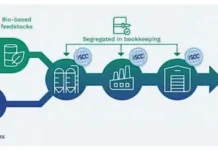This is a new column focused on applications of UV and EB technology in additive manufacturing (AM). Conference reviews, developments in materials, print technologies, post-processing, sustainability and other topics of interest will be reviewed in forthcoming issues.
The first subject for the column is a review of the Rapid+TCT Conference, organized by the Society of Manufacturing Engineers (SME), June 25-27, 2024. With more than 400 exhibitors and 200 presentations, it was a great opportunity to see new technology and live equipment demonstrations, talk to technical experts, and listen to industry leaders. All areas of additive technology were represented, including metal powder, polymer powder, polymer extrusion, UV inkjet and vat polymer, as well as their associated post-processing technologies. The day-long workshop on AM in healthcare reflected the increasing importance of hospitals in design and production.
Industry Outlook
A panel of industry leaders included Jeffrey Graves, Ph.D., 3D Systems; Marie Langer, EOS; Charlie Grace, Nikon SLM; Yoav Zeif, Ph.D., Stratasys; and Yoav Stern, Nano Dimension. In their discussion, hype was identified as the number-one enemy of the additive industry – particularly with the timeline to deliver on the vision. The growth of the additive market is significantly slower than initially forecast, and recovery from the COVID-19 pandemic and logistical challenges still require patience.
Zeif stated that current commercial applications comprise 40% of the prototyping market and 1% of the manufacturing aid market (jigs and fixtures), but end-use parts are only 0.05% of the manufacturing market. From the perspective of Stern, additive machine manufacturers are a three- to five-billion-dollar industry whose largest participants are not profitable due to the high cost of innovation, emphasizing the need for consolidation in the additive market to remove redundancies and increase efficiency. The acquisition of Desktop Metal by Nano Dimension following the conference illustrates the relevance of this perspective.
The panel also agreed that additive manufacturing should not compete with high-volume production. Local additive manufacturing is key, rather than long logistical chains through Asia. Langer and Zeif emphasized sustainability, the environmental footprint of parts shipping and the carbon footprint on the materials side. Grace emphasized the importance of supporting customers in a production environment with processes and materials that meet manufacturing requirements and standards, including the need for extended intervals of maintenance-free operation.
Graves and 3D Systems are focused on low-volume/high-value applications in the medical market. Near-term medical markets include growth areas such as dentistry, which was widely on display on the exhibitor floor. Longer-term markets include knee and hip orthopedics, as well as transformative applications such as human tissue replacements, which may be 10 years away from realization.
Keynote Highlights
James Zunino of the US Army DEVCOM reviewed the “Extreme Cold Point-of-Need Manufacturing Challenge.” With only two weeks’ advance notice, successful applicants needed to present a strategy to print in an environment of -65° C, simulating rapid response in the Arctic Circle. Laser sintering and polymer extrusion technologies were selected and successfully passed the testing phase. Applications included an intradermal therapeutic applicator from DEKA Research and a portable red blood cell bioreactor from Safi. I spoke with another member of the DEVCOM team, who told me that no UV technologies had been selected, and that there is no significant usage of vat polymerization in the military. The level of technical skill required to operate photopolymer printers is deemed to be above the qualifications of the entry-level Privates who would be responsible for their operation. There is interest in the superior surface quality of photopolymer printing for producing rotor blades, but, in practice, laser sintering is used, followed by post-process surface polishing.
Matthew Di Prima, Ph.D., materials engineer at the FDA, presented an overview of the additive manufacturing of medical devices. In 2020, 350 devices were cleared, of which polymer comprises 21% and titanium alloy comprises 68%. The single largest application is with spinal cages (replacements for sections of spinal columns), but dental applications continue to be significant.
The exhibitor floor was very busy, and I had several informative discussions with materials suppliers and printer vendors that will be covered in our next issue.
 Paul Share, Ph.D.
Paul Share, Ph.D.
Principal Consultant
Advanced Materials Design LLC






